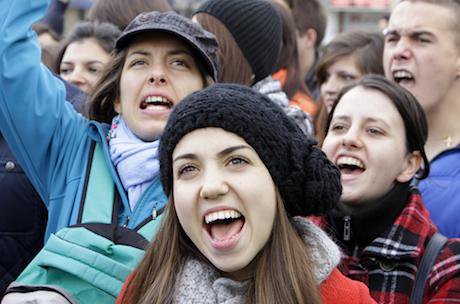
Thousands protest against the Bulgarian government in Sofia. Demotix/Johann Brandstätter. All rights reserved.
Thousands took to the streets in Sofia and other Bulgarian cities on 14 June to mark the one year anniversary of the start of large-scale daily protests under the headline "Ostavka" (“Resignation”). Sparked by the appointment of controversial media mogul Delyan Peevski as head of the State Agency for National Security, the demonstrations continued months after Peevski gave up the post. People asked for the resignation of Prime Minister Plamen Orecharski, whose government had put forward Peevski. More than that, Bulgarians were expressing their deep resentment with a political class perceived to be captured by business and crime groups, and which consequently does not represent the interests of citizens.
At the beginning of the summer, it seemed that everyone was in the streets in a colourful and creative movement. In peak days, tens of thousands marched on the main boulevards of Sofia. Participants speak about a communal spirit which had been missed before: coming every day to the protests, seeing familiar faces, talking politics, feeling part of a joint struggle. By the end of the summer, however, this unity had been chipped. Somewhere along the way, the protests took on a more specific political colour. Voices blaming "communists" (Orecharski’s Socialist Party was built on the former Bulgarian Communist Party) for all society’s ills became predominant. Getting Bulgaria rid of "red scum" and making it truly European emerged as the core message. This was the rhethoric of center-right parties in opposition. Some stopped participating, weary of being used for electoral games.
"Children of the transition"
It was in this context that a student occupation of the Sofia University was planned. Its organisers say they were fed up with anti-communist chants in a country where communism does not exist. They say they wanted to go beyond the empty slogans and discuss the real issues facing Bulgarian society today in a "new language".
The two main objectives of the occupation were to create an active student society and to reenergise the summer protests and thus eventually bring down the government. Sofia University was fully occupied between October 25 and November 17. Occupations of a lecture hall preceded and followed the full occupation. In the weeks of full occupation, participation grew from around 50 students in the beginning, to more than 1,000, including people coming from outside the university in solidarity. With the 1968 movements and the 2009 Zagreb Faculty of Philosophy occupation as models, the students tried to use direct democracy tools to debate social issues and make policy proposals.
In a speech he made to demonstrators from outside the university, 24-year old Ivaylo Dinev, one of the leaders of the student movement, said that he represents "the children of the transition" who are fed up with a country run by "aparatchiks, oligarchs and clowns" and who want to recapture the state and make their own transition. The freshness and honesty of the student voices struck a chord among many Bulgarians. Students tell stories of how their hands were kissed in the street or how people drove in their cars from the provinces to bring them food and medicine, prayed for them and told them they are the hope of Bulgaria.
For a brief moment, the students managed to reconstruct the unity lost by the summer protests and even go beyond that. Where they went further is by attempting to discuss social injustice. Before the Bulgarian summer protests began, in February, thousands of people had taken to the streets of Sofia and many other cities, protesting against high electricity bills, asking for the nationalisation of the energy system and eventually provoking the resignation of the center-right government led by Boyko Borisov.
Around the period when these protests took place, six people set themselves on fire in separate incidents across the country. Their acts were shocking symbols of the despair of living in a country where power is in the hands of oligarchs and basic needs are not met. Yet this winter protest remained in many ways an unanswered call for help. Solidarity with the despair of the most impoverished in the country was limited. The summer protesters did not take on the legacy of the winter revolt: while some saw continuity between the two waves of mobilisation, others preferred to distinguish between the “beautiful”, “educated” summer protesters and the “less civilised” winter ones.
Manipulation by media and politicians claiming that the winter protesters were paid to bring down the Borisov government did not help. But the student occupation brought together people who participated in both protests and, moreover, advocated for going beyond artificial conflicts created by politicians and the media serving their interests, and discussing actual problems people have.
"United, We Save"
In Romania too, 2013 was a year of unprecedented social mobilisation. Starting from 1 September, tens of thousands demonstrated in Bucharest, Cluj and many other cities and even villages, for weeks in a row against a plan to build a gold mine at Rosia Montana in the Apuseni Mountains. The outrage was sparked by a draft law that would have given Rosia Montana Gold Corporation, the company promoting the gold mine, extraordinary powers to resettle people and be automatically reissued with permits overruled by national courts.
Those taking to the streets were convinced that the consensus among politicians across party lines and mainstream media in favor of the mine, despite its social and environmental costs, was a result of corruption. Three villages and four mountains would have to be destroyed to make way for the exploitation, which would use 12,000 tonnes of cyanide and generate 13 million tons of mining waste every year. During the weekly marches, participants built up a sense of community and felt increasingly stronger and more solidary. For the youngest, this was unprecedented; for the older, this togetherness reminded the 1989 revolution and the follow-up protests of the early 1990s. Like in Bulgaria, a deep anger with the corrupted nexus of business and politics which overruns the will and needs of citizens is what brought so many Romanians to the streets.
It was only this June that the draft law was finally rejected by the parliament (though several other legislative proposals including extraordinary powers for mining companies are still up for legislative debate). Still, the fact that over the nine months since the draft law was proposed the legislative postponed the vote and parliamentarians expressed hesitation about the proposal gave protesters trust in the efficiency of their action. The taste of victory was empowering.
Last fall’s mobilisation was built around a 15 year old campaign to save Rosia Montana, driven by a core of committed villagers and allies from among NGO activists, lawyers, architects, artists. However, essential to the large-scale street mobilisation was the Facebook group Uniti Salvam ("United, We Save"), created in the first days of September and skillfully managed by a handful of activists with experience in PR. The idea of weekly hours-long marches along different routes into neighborhoods, promoted on the page, was crucial in breaking the blockade the mainstream media had imposed on the protests. The posts on the Uniti Salvam Facebook page stressed that the protest was against all political parties. Because politicians of all political colours had at one point or another promoted the gold mine, the protesters were credible in their positioning against all parties and enjoyed broad sympathy in society throughout.
The marches ended with the occupation of main boulevards and debates lasting into the night. In this atmosphere, Uniti Salvam was turning from an online page into a civic movement. People got together in so-called forums to discuss strategies for protest but also more broadly problems faced by the country. (Those forums continue today - with fewer participants, naturally.)
By the end of the year, the three priorities of the movement for the future had been decided: continued support for the Rosia Montana campaign, fighting against fracking, and pursuing the reform of the political and electoral systems. In October, activists from the Uniti Salvam national network supported villagers from Pungesti, Vaslui county in eastern Romania, in their attempt to block US company Chevron from drilling for shale gas in their village. The blockade and the harsh police response to it were broadcast live on the internet and eventually made it into mainstream media.
This May, the movement launched on its Facebook page a call to boycott the European Parliament elections (a “citizen strike” as the activists called it), as a means to initiate a public debate on the need to reform the electoral system. Romanians vote on closed party lists at most elections and membership and financial conditions for registering new parties are prohibitive. In a society where multiparty elections have existed for only 25 years, a call to boycott elections proved controversial, though few dispute that electoral reform is desirable and that the boycott succeeded in putting the issue on the public agenda.
Inside the movement too, some disagreed with the boycott. Shale gas as well had not been entirely uncontroversial as a direction of action. Rosia Montana had brought together a broad number of people of different backgrounds and ideological orientations. Once that struggle faded into the background, keeping people united has been a challenge, especially since decisions in the non-hierarchical movement are made using deliberative democracy instruments.
"Less alone"
Last year’s protests in Romania managed to achieve victory on the draft law and give birth to a loose civic movement which continues to exist today. The Rosia Montana case illustrated many of the ills of post-socialist transition in Romania (generalised high-level corruption, a sold out media, blind faith in foreign investors, destruction of nature and rural life at the expense of dubious infrastructure projects). When the large-scale mobilisation grafted onto the campaign against the gold mine, convincing arguments and evidence to justify the protest were ready.
As in Bulgaria, last years Romanian protests did not come out of the blue. In Bulgaria, some see continuity between the summer and winter protests and actions by the environmentalists taking place over previous years. Similarly, in Romania, the protests in 2013 were preceded by Occupy style actions taking place since 2011 and by a major mobilisation against austerity and the privatisation of healthcare in January 2012. But the Romanian movement is currently at crossroads. Will it remain a loose civic movement to be activated at key points when public pressure is needed, turn into a more structured network of local formal and non-formal activist groups, or even form a new political party on the model of the Spanish Podemos?
The fact that the Bulgarians’ objectives were explicitly political from the start probably made their struggle more complicated. The Romanians too took on the entire political class and mainstream media yet Rosia Montana gave them a finite non-partisan focus. Uniti Salvam too became internally conflicted and suspicious to outsiders when the group moved on to electoral reform.
For some of the Bulgarians who protested on 14 June to mark the one year anniversary, the taste of struggle has been reignited. People tried to plan other protests, hoping street pressure will force the Orecharski government to resign this time around. Those people were acting out of a feeling of “unfinished business”. Yet many stayed this time around: for one, they feel already that the anniversary protest was too closely linked to the political opposition; for another, Orecharski has to resign by the end of the summer anyway, since early elections have been scheduled for the fall – getting him to resign earlier would have only been of symbolic value.
Whatever happens next, there is no doubt that in both societies a big chunk of people have become more politicised, aware and involved. Across both countries, activists say networks of trust were built, a social fabric spun. A leftist intellectual in Bucharest confessed that since the Rosia Montana protests began, he feel "less alone". Bulgarian students say the way of life of the occupation, which resembled Athenian democracy, is worth sharing and replicating in the future. In Romania, small campaigns to save parks or museums are springing up like mushrooms after the rain. A Sofia playwright shared how, after the protests, he and others felt comfortable to start helping Syrian asylum seekers which came to Bulgaria in huge numbers last year. Before the protests, the man said, he and his friends would have felt apprehensive to express this kind of solidarity.
Moreover, the Bulgarian students have already defined the parameters of a future more long-term struggle for both countries: reject a transition that has sacrificed people and common goods to generate profits for a corrupted elite, and get citizens involved in deciding over the things that matter most to them.
Who is to say that there is no impact until a government collapses?
Read more
Get our weekly email
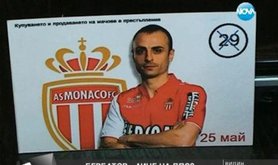
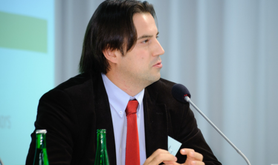


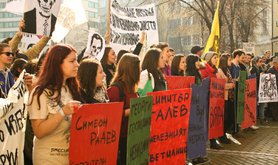

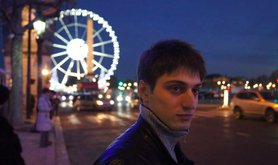
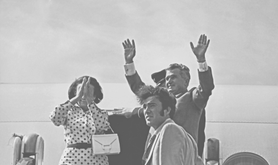
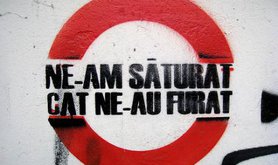

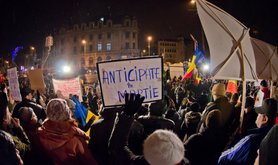
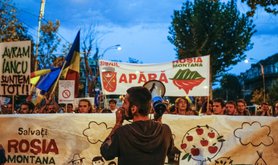

Comments
We encourage anyone to comment, please consult the oD commenting guidelines if you have any questions.